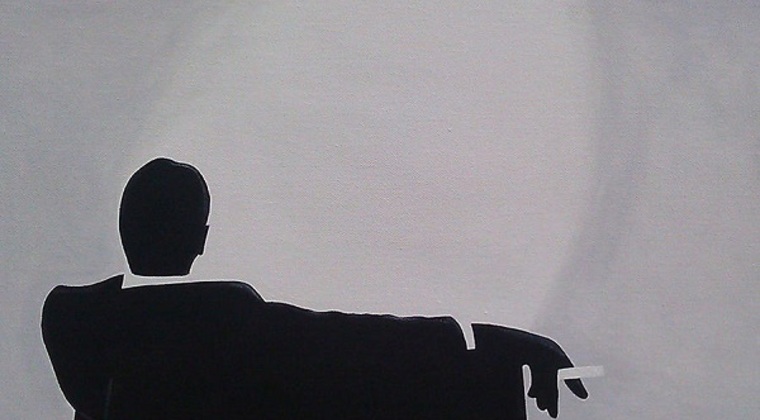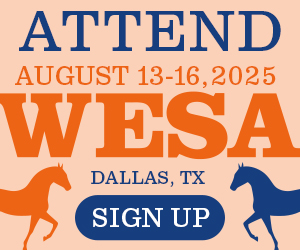Hollywood!
What makes a great Hollywood movie? Exactly the same principles that make a great speech, presentation or sales conversation.
The good news is that you probably don’t need unlimited resources to hire an Oscar-winning writer and director. Just learn to adapt these seven basic Hollywood techniques to increase the impact of your speeches.
1. Embrace the Creative Process
The first step is to look at the creative process. Comedian George Carlin once said, “Creating a great speech or comedy routine is more like going on a field trip than working in a laboratory.” What he meant was, the creative process is messy, more free-flowing, so just embrace it. Forget the PowerPoint. That’s tidy. With a yellow pad, a flip chart or a whiteboard, just list or mind map what content could go in your presentation. You want stories, examples, quotes, statistics, your corporate message and client successes. Then organize the structure of your presentation in a conversational and logical way and add the visuals. Special effects are not consulted until the “storyboard” is created.
2. Consider Collaborating
Collaboration is the norm in Hollywood, and it can work for speakers and presenters no matter who their audience or what their venue. In Hollywood you have directors, producers, actors, set designers, makeup artists and editors who all work together in front of and behind the camera. If you are a sales professional making a big sale, a corporate leader who wants to inspire your international sales force, a business speaker whose speech is setting the tone for something larger, you can get value from remembering it is very difficult to be creative in isolation. When creating your presentation, think of whom you can go to for help? Do you have a mastermind group, speaking buddies, team members, a sales manger or professional speech coach?
3. Start with a Great Story
We all love stories, and whenever we hear one, subconsciously we feel it is a luxury. With your corporate stories, identify your main theme, premise or purpose—basically your plot—and any subplots. I coached a recently promoted retail executive who found, a week after his promotion, he was invited to speak at the company sales meeting to 500 young store managers. His challenge was to inspire the managers to enthusiastically embrace a program to get their employees to contribute money-saving ideas. His subtext was “Now you can see why I deserved this promotion.”
I suggested he walk on stage, look at the audience, and say, “We are here to talk about heroes.” In seven words, he proved that this is not another dull, corporate speech. “We are here to talk about heroes. They may be sitting in front of you. They may be sitting behind you. They may be YOU. In-the-trenches heroes!”
He then added some Hollywood drama with characters, dialogue and an everyday hero. He found a story about a young man in the shipping department who noticed that he was shipping seven company newsletters to the same location on the same day in separate packets. This mailroom hero asked if he could package them together with a note requesting distribution on the other end. That year, his idea saved the company $200,000. Relating the money to something specific, he explained, “$200,000 is 18 miles of shelving.” That added specificity and color to the story. Statistics will not stick if they are not compared to something memorable. Your audience remembers what they “see” while they hear.
4. Begin with a Flavor Scene
Good movies open with what is called a “flavor scene,” grabbing attention and positioning the audience for what is to come. A senior scientist at Genentech grabbed the interest of a Continental Breakfast Club audience by beginning: “Being a scientist is like doing a jigsaw puzzle, in a snowstorm, at night, when you don’t have all the pieces, or the picture you are trying to create.” Everyone sat up and paid attention, they realized that they could understand and relate to the challenges and frustration of a scientist. That immediately proved it would not be a technical presentation.
Your flavor scene doesn’t necessarily have to lead where the audience expects it to, but it should make an impact, and it must tie in to what follows.
Most business people start their presentations with “Good morning. My name is John Smith. Thank you for your time. I am with the ABC Company. We have been in business for 16 years and are known for our technology….” The audience is thinking: “So what? Who cares? What’s in this for us?”
Don’t sound the same as everyone else! Don’t be boring and start by talking about your company. Create the “flavor scene” that we are interested in and know about the prospect company.
5. Create Captivating Characters and Construct Vivid Dialogue
Gone with the Wind doesn’t begin with historical background on the Civil War. Instead, we find Scarlett O’Hara sulking about the impending conflict that might interfere with her social life. Immediately, we observe her frivolous, shallow, fun-loving personality. Characters also establish themselves by their decisions and actions. Rocky Balboa agrees to fight Apollo Creed in Rocky 1. Elle Woods of Legally Blonde resolves to go to Harvard. The sooner this happens, the sooner the audience gets emotionally involved.
Nobody cares what you say about your product and service. They would rather hear from other “flesh and blood characters” whom have overcome the same obstacles they now face. Add a “back story” to your speeches. Always use the “character’s” dialogue to talk about their situation. You can tell the audience what your solution was in your words; the success needs to be in the “character’s” words.
6. Remember Scene Changes
Early in nearly every movie we are introduced to a day in the life of our protagonist. Then something happens! The lead character overcomes one challenge and runs right into another. This involves scene changes. The movie literally moves from point to point, maintaining interest by changing settings, focal points, emotions and energy levels.
The biggest enemy of a speaker, no matter how good, is “sameness” or lack of variety. Each time you move from story to story or example to example, this is a scene change. Use variety to keep your audience interested.
7. Provide a Lesson Learned
Legendary Hollywood producer Sam Goldwyn said, “If I want to send a message, I’ll use a telegram.” Yet, all great films—and speeches—have a message. However, when action and thrills serve a compelling story with a message and finish up with a heart-tugging or eye-opening conclusion, now we have what makes an unforgettable movie or speech.
Good questions will remind you of good stories and experiences. A simple question I use is “If you had one sentence rather than 45 minutes, what would you say?” The purpose is to simplify and clarify your central theme. Even with a complex subject, can you explain it simply? One of my favorite replies has been “This is a brand new company.” I said, “Then, your opening line is “Welcome to a brand new company!”
Stories are always compelling. Most people ask, “Does the audience really want to hear these stories?” YES! It is important the audience sees the person behind the position. We are all motivated when we see the life lessons beyond the corporate message.
Every speaker, business presenter and sales professional can become a speaking star. How? By incorporating these seven Hollywood principles into their presentations.










